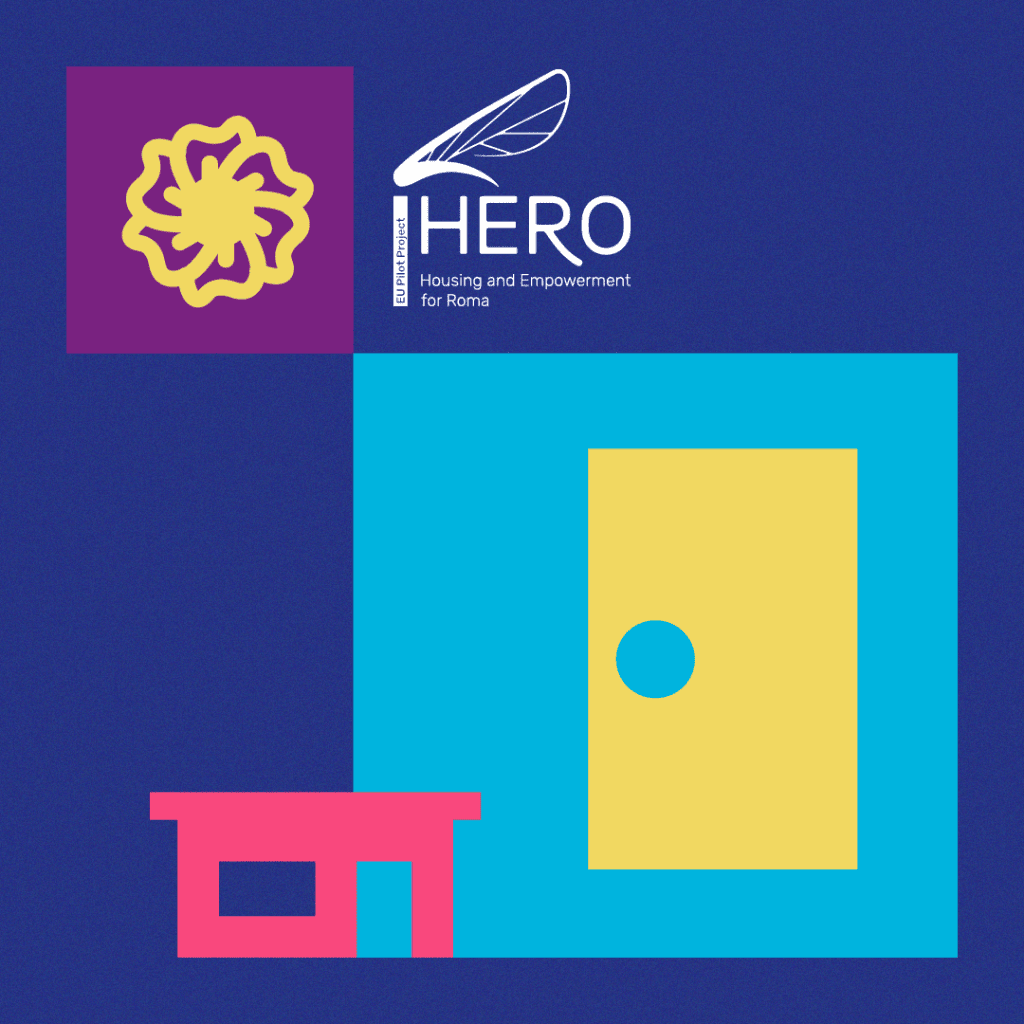Our reports often highlight the exceptional results that the participants of the Housing and Empowerment for Roma (HERO) project achieve on their path toward independent housing. To support the core activities of HERO and to deliver benefits to the wider HERO communities, HERO uses a social innovation model to foster community cohesion and increase social inclusion.
Gill Siddle, a Senior Strategy Consultant from UpSocial — the team of experts behind the social innovation projects within HERO — explains how such solutions can tackle complex social problems at scale:
Addressing complex challenges, such as those faced in HERO communities, requires collaboration and innovation. We deliver sustainable models through our ‘social lab’ approach that brings together diverse stakeholders to co-create effective solutions, making certain that they are tailored to the specific needs of the community.
A diverse mix of stakeholders, including regional governments, NGOs, civil society organisations and residents work together to design an innovative, impactful project for lasting change. The model also helps build capacity in stakeholders to deliver best practice, sustainable community projects.
Throughout the project, the objective is clear: identify what works, what needs improvement, and how to replicate success across different contexts, creating a blueprint for future development with a focus on community cohesion or social inclusion.
Read further to learn how our stakeholders and communities benefit from HERO’s innovative approach to making a difference for Roma families across Europe.

The key components of the HERO social innovation projects
The HERO social innovation projects require careful orchestration and the collective effort of various stakeholders to achieve the objectives — “the right mix of measures to make a lasting impact,” Gill underlines. Below is an overview of how stakeholders are supported to develop innovative community cohesion projects:
- In the first phase, stakeholder consultations are held to gain insights into the most pressing issues in the targeted HERO communities and identify the most vulnerable groups.
- In the second phase, a “call preparation workshop” brings stakeholders together to narrow the challenge by focusing on a specific community problem and collaboratively finding potential solutions. Within this workshop, stakeholders are introduced to diverse methods and tools of social innovation and guide each other to incorporate innovation into project ideation.
- A call for proposals is the next critical component, encouraging local stakeholders to contribute their innovative solutions to the identified challenges. The stakeholders use what they have covered in the workshop to develop a project proposal. One successful proposal in each country is awarded a grant.
- UpSocial plays a crucial role in the final phase, providing detailed support for the design, planning, and delivery of the projects. The final component also involves reporting the outcomes of the projects. This is essential for understanding the impact of the intervention and learning from its execution.
Addressing the challenges that Roma communities face requires innovative strategies that go beyond traditional interventions. The HERO social innovation model recognizes that the problems these communities encounter require new ideas.

Social inclusion and other benefits for HERO participants
The HERO social innovation projects, born from the real necessities highlighted by both Roma community leaders and inclusion experts, aim to deliver concrete benefits that can be observed and measured. Gill confirms, “In the short term, the funded innovation projects will create measurable outcomes for the target beneficiaries.”
Success is measured not only by the number of participants reached but also by indicators that reflect changes in their lives. These could include improvements in skills or a strengthened sense of community. Moreover, HERO also places significant emphasis on capacity building among those participating in the process.
We collect data regarding the capacity of the organisations and stakeholders who were part of the process in order to assess the role of HERO in increasing understanding and confidence in designing innovative solutions and then developing, delivering and evaluating them.
– highlights Gill.
In the long term, the HERO initiative envisions a future where these organisations can independently adapt, expand or replicate the funded solutions and use social innovation to address other challenges. This approach ensures that the benefits of the project continue to benefit the community long after the initial phase, fostering ongoing development for participating communities and beyond.
Long-term effects beyond Roma communities
For those who are playing a role in bringing the HERO social innovation projects to life, the benefits extend far beyond the satisfaction of contributing to a noble cause. The HERO social innovation projects offer an additional layer of impact, for example, by creating a community support network or increasing positive interaction between Roma and non-Roma residents.
As Gill puts it,
“The social innovation projects offer a way for HERO to create impact for the residents in the HERO communities not directly engaged in the core housing activities, further advancing the overall project aim of increasing social inclusion.”
All in all, it is clear that HERO’s holistic approach and the tailored social innovation solutions are more than just interventions – they are stepping stones toward a more inclusive, cohesive, and empowered European community. The ability to be adapted and replicated across different contexts promises a future where the principles of social innovation can be applied to a wide range of challenges, building resilient communities worldwide.
Explore more HERO stories from our partners, participants, and community leaders on our website, and follow the HERO updates on social media.
